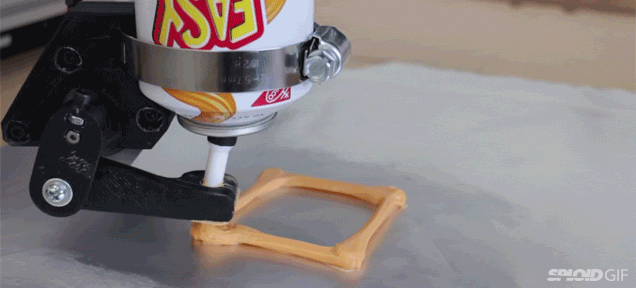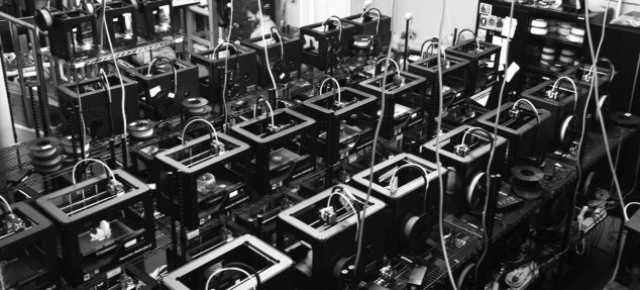I started thinking about 3D printing, I mean really started thinking about it, in 2012. I was eking out an existence as a penny-pinching grad student at the time, so a $US3000 machine that squirts out hot plastic and builds frivolous knick-knacks wasn’t exactly fixated in my cerebrum.
In September of that year, I picked up an issue of Wired with former MakerBot CEO Bre Pettis on the cover. He looked kind of smarmy and cocksure, holding a Replicator in his hands with “This Machine Will Change The World” bannered behind him.
Sensational? Yeah, maybe a little. One 3D machine isn’t quiiite enough to change the world. When I recently checked Wired to give the piece a re-read, I noticed an editorial change: “The New MakerBot Replicator Might Change Your World.”
That slight edit actually says a lot. First off, the future tense isn’t really necessary. 3D printing, as an industry, has already changed the world. You can search right here on Gizmodo and see amazing things happening in medicine, architecture and next-generation cosplay. But there’s also added hesitation. Why swap out the commanding “will” and throw in a hand-wringing “might?” Wired never says in its lengthy editorial, but the last few years have provided ample evidence that the desktop 3D printing future is a steady revolution — a slow burn rather than a wildfire.

Because the unsexy truth is most people don’t need a 3D printer, which makes 3D printing one of the most personal pieces of technology I’ve ever had to wrap my brain around. And that’s really where that “your” pronoun comes in. This machine is more about you and what you make with it then some company trying to push what you should make with it. It takes some soul-searching to see if it fits into your life at all.
Unlike most gadgets and gizmos, 3D printers are almost impossible to market right now. You can’t easily describe any practical use that resonates with your average, run-of-the-mill consumer. But think of any gadget you have lying around, or even the device you’re reading these words on, and you could probably answer succinctly if someone asked you what it did, right? Smartphone: it can check email, use millions of different apps for various games and applications, surf the internet, and oh yeah, make phone calls. Smartwatch: an extension of your smartphone. You can get simple notifications and send equally simple responses, some even check your heart rate. Laptops, gaming, productivity, Netflix. You name it.
But if you asked what a 3D printer can do, what do you say? It prints things in 3D… sure, but when you start probing further, people’s answers tell you more about themselves. A costume designer may talk about how prototyping jewellery, or a prosthetist might describe how to create limbs for kids in need, or maybe it’s as simple as the Wired‘s answer back in 2012 saying “the killer app for our MakerBots has been toys: dollhouse furniture, board game pieces, models.” Because a 3D printer just creates things, that’s it’s fundamental purpose, and it’s the user who defines what that means.
Last week I walked through the convention floor of a 3D printing convention in New York City. I asked company after company after company what was next for 3D printing. MakerBot’s new CEO Jonathan Jaglom reiterated the company’s vision of seeing a machine in every home, people talked of newer and better materials so makers can create without restriction, others said building an “ecosystem” of software and hardware tools will make crossing the CAD divide less painful, and the big one — driving down the cost of entry.

Right now, the focus is less on the machines and more on everyday applications. The initial 3D printing hardware explosion is over, though hardware will continue its steady march of progress. We’ll likely see even more and better printers of different sizes, makes, prices, and materials.
The question now is, “What do we do with it?” And for the next few years (and maybe more), that question will still be answered with another question: “Well, what do you want to make?”
A month ago, I wanted a 3D printer the same way I wanted a nice, overly expensive 4K television: Sure it would be great, but like… whatever. But the possibility of 3D printing up some snarling orcs for my weekly D&D campaign, then creating a few pieces of flair for my upcoming ComicCon garb, and then topping it off with an enclosure for that Arduino project I’ve been working on is my current, unceasing obsession. After three years, I’ve found my definition of 3D printing.
I hope you find yours.
Picture: Bold Machines
